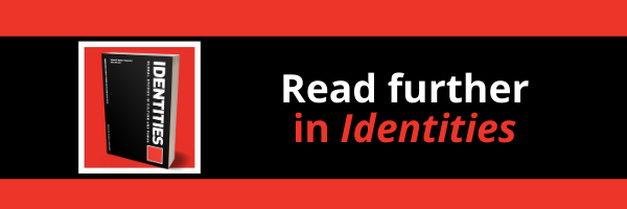|
|
|
The 550 days of communication blockade that Kashmir witnessed between 5 August 2019 and 5 February 2021 was unprecedented - the longest ever communication blockade in the history of any democracy. Coupled with intimidation, threats and restrictions on movement, the Indian state makes it too difficult for the media to operate freely in the region.
In my Identities article, ‘Communication blackout and media gag: state-sponsored restrictions in conflict-hit region of Jammu and Kashmir’, I highlight the events after the abrogation of Article 370 and its impact on press freedom in the region, especially to understand the perception of local journalists reporting from ground zero post-August 2019. On 5 August 2019, the Narendra Modi led government revoked Article 370 of the Indian constitution that provides quasi-autonomy to the region. In a broader neocolonial context, the abolition of Kashmir's autonomy is also the culmination of the Hindu indigeneity ideology, according to which Muslims on the Indian subcontinent are portrayed as invaders and foreigners, and Kashmiri Muslims are doubly marked as the Other: first as Muslims, and second as Kashmiris committed to an unrelenting struggle for a UN-mandated plebiscite and democratic sovereignty.
Since then, the deterioration of the press freedom in Kashmir has reached an alarming level as the state continues to smother the voices of dissent in the region. According to a report released recently by the Reporters Without Borders, India is considered to be one of the world's most dangerous countries for the journalists. It is illustrated by the fact that in 2020 four journalists were killed in connection with their work, five in 2018 and four in 2017.
Though India has not slipped further in the World Press Freedom Index-2021, compiled by Reporters Without Borders (RSF), journalists in India are vulnerable to a variety of attacks, including police brutality against journalists, ambushes by political activists, and retaliation by criminal organisations or corrupt local officials. India is ranked 142, unchanged from last year, after falling steadily from 133 in 2016. Nepal is ranked 106th in the South Asian region, with Sri Lanka 127th, Myanmar (pre-coup) 140th, Pakistan 145th and Bangladesh 152nd, and Freedom House demoted India to Partly Free status in the 2021 edition of Freedom in the World. The report notes that throughout the year, Prime Minister Narendra Modi's government and its state-level allies continued to clamp down on opponents, and their reaction to COVID-19 included a ham-fisted shutdown that resulted in the unsafe and unplanned displacement of millions of internal migrant workers. Meanwhile, the ruling Hindu nationalist movement scapegoats Muslims, who were unfairly blamed for the virus' spread and faced vigilante mob attacks. Back in Kashmir reporters are often threatened by the police and media outlets are at risk of being shut down, as was the case with the Kashmir Times, the Kashmir valley's leading newspaper. In its latest diktat, the local police in the region has banned the live coverage of the gun fight between the security forces and the separatist militants. Instead, a district police chief will brief the media on the gunfight. The ban has been widely criticised and many believe that the ban will restrict the media's ability to exercise their oversight duties. There has been substantial impact on the academic freedom which has deteriorated dramatically in recent years, as political and religious repression of teachers, students and universities has intensified. The Freedom House report also mentions how members of the student arm of the Hindu nationalist group Rashtriya Swayamsevak Sangh have committed acts of violence on college campuses throughout the country, including assaults on students and professors. Academics are under pressure from the BJP government not to discuss sensitive issues, especially India's relations with Pakistan and the situation in Indian Kashmir. A group of ten international organisations urged, ‘The Indian government has taken various measures that violate free expression and privacy rights in response to growing international criticism of its handling of the farmers’ protests’. This sort of communication clampdown signifies how deeply the government of India wants to control media and not allow news from the region to go out. By killing the news or by shooting the messenger, the entire media landscape has taken a blow, and reporting out of this conflict zone has become more dangerous.
Image credit: Journalists covering a gunfight between security forces and separatists in Indian-controlled Kashmir. Photo by photojournalist Qisar Mir.
Blog post by Bilal Ahmad Pandow, University of Kashmir, India
Read the Identities article: Pandow, Bilal Ahmad. Communication blackout and media gag: state-sponsored restrictions in conflict-hit region of Jammu and Kashmir. Identities: Global Studies in Culture and Power. DOI: 10.1080/1070289X.2021.1920772
Explore other relevant Identities articles:
Doing research in a ‘conflict zone’: history writing and archival (im) possibilities in Jammu and Kashmir “Their wounds are our wounds”: a case for affective solidarity between Palestine and Kashmir Counter-maps of the ordinary: occupation, subjectivity, and walking under curfew in Kashmir
0 Comments
Your comment will be posted after it is approved.
Leave a Reply. |
|
Explore Identities at tandfonline.com/GIDE |
|
The views and opinions expressed on The Identities Blog are solely those of the original blog post authors, and not of the journal, Taylor & Francis Group or the University of Glasgow.


